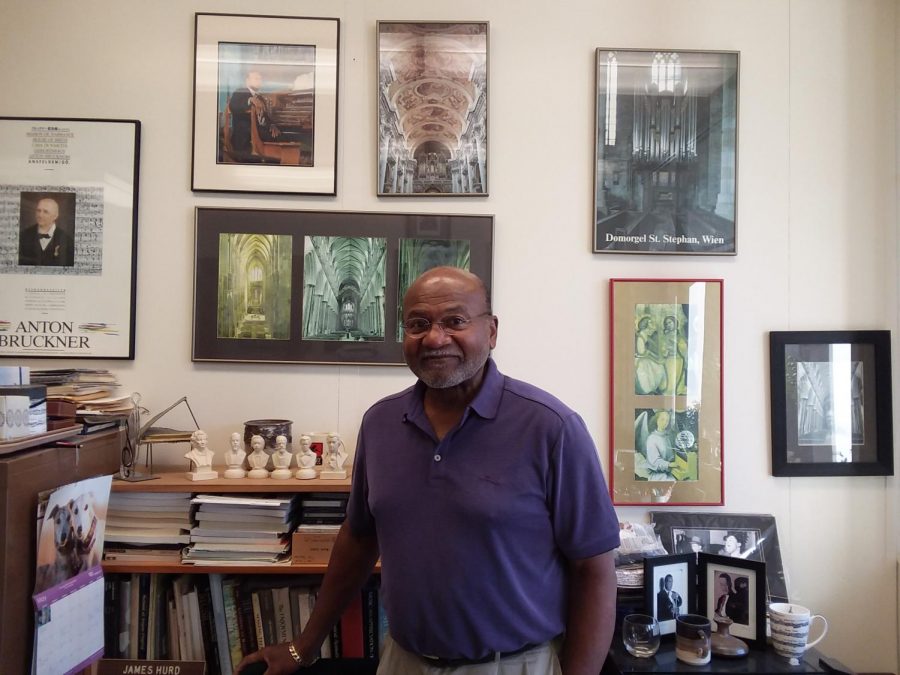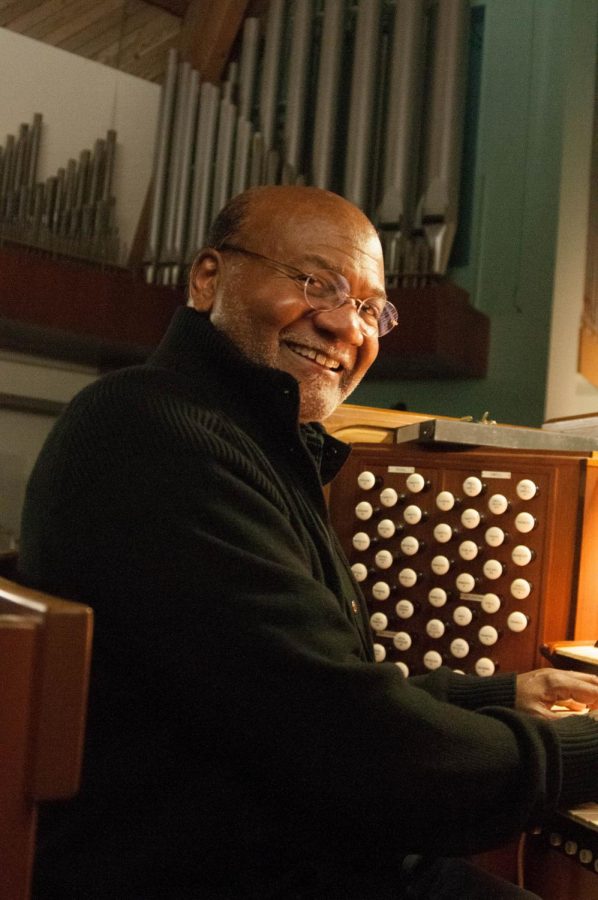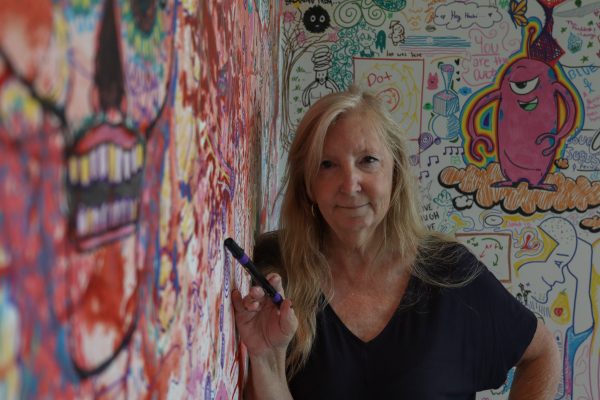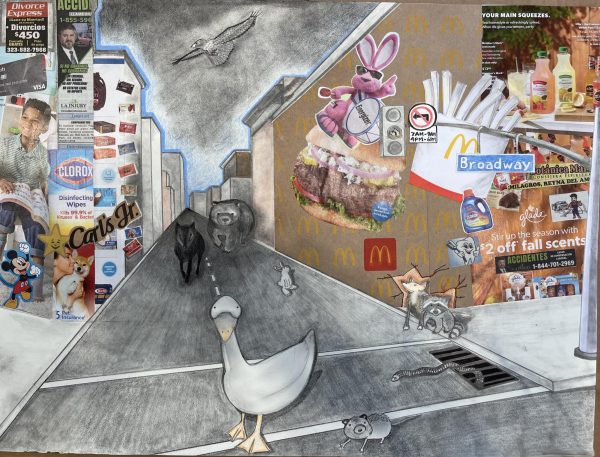Music professor recalls his 1960’s childhood
The room thunders suddenly as the notes begins to fill the large classroom. One moment, you feel the celebratory tone of the music as if you were in a joyful church service, then the tone lowers with. A suspenseful feeling of something daunting approaching.
The pieces feel as though they were being played by a large orchestra but in reality it is just one man.
The professor pushes the different buttons on the sided of the instrument to change the volume and other elements of the music as he continues to play. His arms and fingers dance from one keyboard to the other, while his feet move below him as the music progresses and the sound of the creaking wood indicates the switch to a different foot pedal.
James Hurd started learning how to play the organ around the age of 15 and became the organist for his father’s church by the age 17.
His father whom he often accompanied to his religious meetings and was the closest to amongst his brothers once considered that his son would become a minister like him, but supported his son’s later decision to pursue music.
“Yeah, my parents taught me that we can do anything that we wanted to do,” he says.
While it seemed that there was a different outcome destined for him as young African-American boy raised in the 50’s, James has been able to pursue his passion in music with a lot of support and his own hunger to succeed.
He has been able to give performances around Europe, play at different types of ceremonies, serve in churches, and ultimately become a professor at El Camino College after graduating with his doctorate at USC in 1973.
James, short but with respectable strength for his age and pensive face adorned with white stubble is now a man just in his 70’s. With a mild mid-west accent, some phrases and the carefulness with which he chooses his words hit at a prior lifestyle.
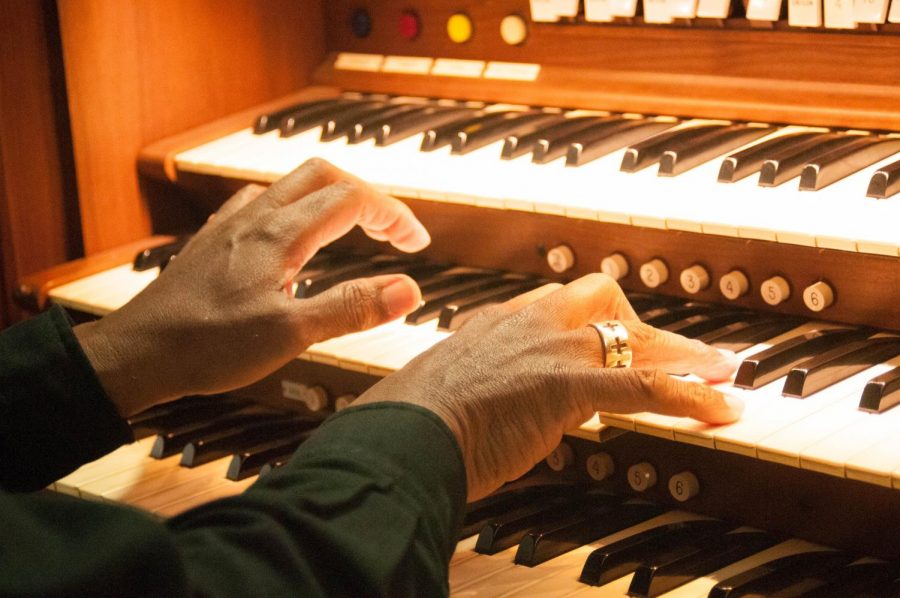
James grew up in a historical city of Topeka, Kansas during a time where the fight to eradicate segregation in many aspects of the American society continued.
As a young boy growing up in Topeka around the 1950s, he lived in an integrated neighborhood and mingled with Hispanic and White kids. Yet from a young age was reassured and aware of his place as a young African American boy.
“They just kind of reminded you of where you belong,” James says.
There were certain locations where he wasn’t allowed to enter or was restricted to separate areas such as balconies in the movie theaters rather the main seating area and on occasions waited in a separate waiting room for a train when visiting his grandma up north with his family.
Apersomal occasion he recalls was being forbidden to eat in a restaurant he mistakenly thought to be integrated during a lunch break in the 5th grade.
His teacher had forgotten to bring back his house key after gym class the previous day and young James was unable to go back home for lunch that day. His teacher Kindly offered him a dollar to get some lunch nearby with, which he was able to order a meal for around 75 cents in those days.
“I just ordered a hamburger and a soda without them even thinking they just automatically put it in a bag and I said ‘well I was planning to eat it here,” James said. “At first I thought she (the waitress) didn’t hear me right.”
But the waitress reassured him that he couldn’t eaten there in a soft but what seemed familiar manner, a phrase she has repeated to others.
“Oh no honey, you can’t eat that in here,” she said.
James left the place surprised, and he ate his lunch on his way back to school. Although the restaurant was in an integrated part of the city, it seemed there were a racial bounds that he would continue to face even beyond his time in Topeka.
In 1973 after buying his first home in Los Angeles after graduate school, he realized that he wasn’t welcomed in the area when trash appeared in his lawn and his windows were broken.
There wasn’t a state law, but a municipal code that forbade houses to be sold to Jews and Blacks in the Westchester area. James had been initialed persuaded to look into a predominantly African American neighborhood. But James wasn’t afraid.
“I believed I had the money for that location so I didn’t see why I couldn’t live there,” he said.
Even amongst the integration back in his childhood, race and the discrimination was still something that was not easily talked about publicly.
When his Hispanic and White friends who he would play with outside of school would ask their parents,”why don’t the Hurd’s go to our school? Their parents would say ‘we don’t talk about that.'”
“So we knew, I would say we were probably ashamed to tell them ‘well it’s because we’re black that we can’t go to your school,” James says.
Like his late friend and civil rights advocate, Linda Brown known for her family’s involvement in the historic case of Brown vs. Board of Education. James took a bus to an all black elementary school that was across town about two miles from home while there was an all-white school about four blocks form his house.
James recalls that his mother was approaches by what he believes were members of the NAACP to see if his family was interested in becoming part of the lawsuit against the segregated school system in the Kansas lawsuit. However, they declined due to concerns for their safety.
“My motherland father, they were from Texas, and so when they came and ask… if we would be part of the Supreme Court case, my mother didn’t want us to be apart of the Supreme Court case because… she knew what happened to blacks you know if they tried to integrate, because in the South of course they were much more hostile,” James says.

“She didn’t want to put the three boys… in danger,” he adds.
Knowing the historic outcome of the case, some might question his parents’ decision to decline yet his parents had initially moved to Kansas from Texas before the case because they knew that their sons would have better opportunities growing up in the mid-west at the time.
Joan Wilson who works as a researcher for groups and events and is ranger in the Dr. Hurd’s first elementary school which is now also a National Historic Site in Topeka, Kansas says that while state lawsuit in Kansas was lost as the school fulfilled the legal requirements established for a quality education. It was still included in the major class action case that would be Brown vs. Brown of Education.
“It is a basic human right, to be able to say that I want to enroll my kid in this school because it’s closer to home,” she said.
While James does not recall whether there was much talk of the case in his town as a child. It may not be a coincidence as Ranger Wilson further explains that often legal procedures were kept secret as people ran the risk of losing their jobs or even putting themselves at risk, although in Kansas the risk was relatively less.
A bigger risk was within the educational walls as African American teachers have been warned before and were aware that they were at risk of losing their jobs if integration were to eventually occur.
A huge difference which adds on to the legacy of the class act was that it was enforced unlike previous constitutional laws including the 14th Amendment, “and that’s why there was resistance, there was backlash and resistance.”
James transferred from Monroe Elementary School to Lincoln Elementary School, a previous all-white school and started 5th grade there.
Without much details, his parents informed him of the charge, ” ‘James you’re going to a new school and we expect you to behave’ and that was it,’ ” James says.
James went on to receive a scholarship to Washburn College after high school after deciding that pursuing music was of better interest to him than becoming the mortician who rode around in “those fancy cars.”
Despite feeling some estrangement from society and living in a time where sometimes worried that he “would only get to a certain point in life,” James says.
He speaks affectionately about his time in Topeka and spoke of nostalgia, revealing that he still keeps in close contact with childhood and school friends who he still visits.
Whenever James visits Topeka, he stays at the house that belongs to an old elementary school classmate from the 5th grade.
A very special letter he holds is from his 5th grade teacher’s wife sadly informing him of his teacher’s death.
“I was sorry to hear that but he was very nice to me… when they heard that my all black church was giving a musical concert he came,” James says.
It was unusual for white people to attend service in all black churches, but his teacher didn’t seem to care about that.
He highlights the relationships his family were able to have with other families of different races, in part due to his father’s position as a community leader.
“The Hurd’s were a little different, we were invited into white homes and we invited whites into our home for dinner and we just had a really good experience and even when we went to college we would invite some of the White and Latino students from the college home to dinner and many times they would invite us as well,” James says.
His relationship with Linda Brown was also special. Recalling their fathers were close friends and bot ministers, although different denominations.
While finishing doctorate in USC was referred to a part position in El Camino College which later turned into a full time position.
As a teacher James tried to maintain a similar personalization that he was raised within, but worries that students today don’t get this intent. He sees growing disinterest for a higher education in some of his students.
Just as with music, James believes that one must has a calling to be a teacher realizing that being on the same level as his students can be a challenge and perhaps harder as times progressed.
Every semester James meets with his students. He studies with them for the final exam and create a project that can bring their grade up a letter.
“I told th people (his students), you know there was a day and age when people who came onto college campus were hungry, hungry for knowledge, hungry for success, hungry for a future. Then I ask, ‘are you hungry? Because if you’re hungry I can feed you,” James says.
The 39 sick days he has collected can be a testament of his willingness to be present and help his students.
“He’s patient, caring, very calm, and warm… and someone who deserves a lot of respect. He’s very humble, I think that’s like the number one thing about Dr. Hurd. That he’s never boastful,” Midori Ataka, organ player and member of the Applied Music Program at El Camino says.
Old friend Brent Carey says it is very easy to describe James as a “gentleman” and someone with impressive amount of talent as the director of the choir of St. Andrew’s Presbyterian Church in Redondo Beach where Brent sings.
Brent is impressed with the little grudge James has toward the type of life he has to live through as a child.
“I’m blessed that I have the ability to perform music and that I’ve been given this talent. I’m blessed and every time I think about it I just say to myself ‘gosh if I had to do it over again, I would do it over again,'” James says.
The connection between the organ and James is a tie to his roots but also a physical legacy of the passion he developed and learned as musician and passing down to his students.
“Everything in my life relates to music… it’s sort of my bread and water,” James says.


